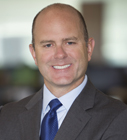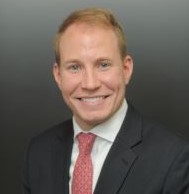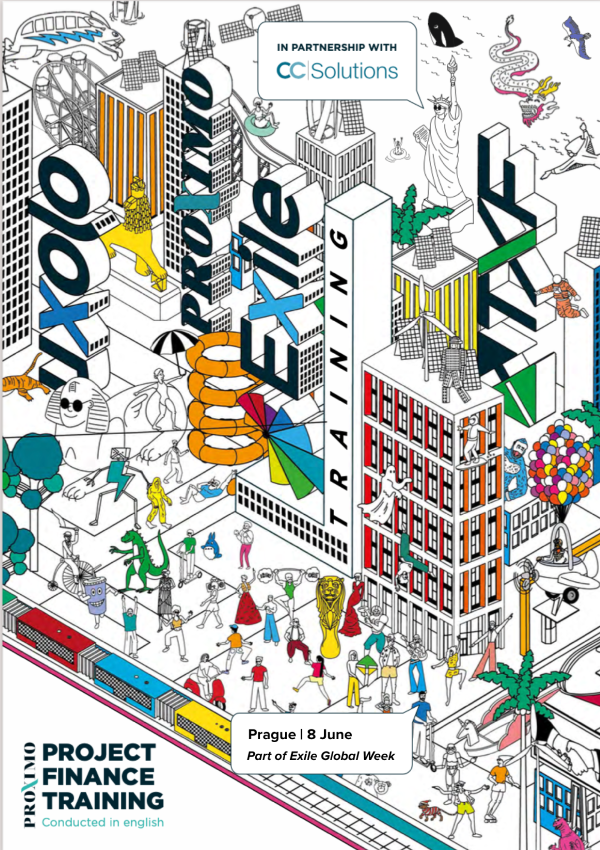Finding certainty in an uncertain climate (part two)
In the second part of a two-part roundtable sponsored by AXA XL, we explore the changing perceptions of risk in the infrastructure market – from both CRI provider and infra investor perspectives – insurance pricing, synthetic securitisation and optimising portfolio management with CRI products.

The old certainties attached to asset status in the infrastructure investment market have been rattled by Covid-19. Widely accepted perceptions of risk – core and non-core asset status – no longer necessarily apply to the same assets they did 10 months ago. For some infra asset managers, what were once balanced portfolios of diversified risk have been pushed out of kilter. And even for those largely unaffected by Covid fallout, risk mitigation and where to invest given an unprecedent macro backdrop is a challenge, especially given more competition for those asset classes that have proven fairly Covid-proof (renewables and communications for example).
It is a scenario in which credit risk insurance (CRI) providers are not only being asked for more capital efficiency solutions – cover for individual project financings and synthetic securitisations – but new products to mitigate portfolio risks for asset managers, tools that could easily be adapted for the infrastructure market.
With new portfolio risk mitigation techniques as high on the agenda as asset growth potential and the search for yield, Proximo and AXA XL brought together a panel of experts active in both infrastructure debt and equity to consider the challenges and solutions to getting infrastructure investment right in the new normal.
Panellists:

Michael Dyadyuk: Head of Financing Strategy (Americas) at Macquarie Infrastructure and Real Assets

David Giordano: Managing Director, Blackrock Alternative Investments

David Goldman: Chief Product Officer, Awbury

Oscar Prytz: Partner, LEAPX

Jeff Abramson: CFA, Head of Special Risks, Global Political Risk, Credit & Bond, AXA XL

Nick Cleary: Partner, Vantage Infrastructure

Andrew Kirby: Principal in Infrastructure Private Equity, Apollo Global
Proximo: Obviously you've all got a track record in managing normal infrastructure risk. But normal no longer applies to the current market, and if you're moving into new sectors how do you mitigate the risk without taking cover?
Mike Dyadyuk: It starts with a prudent approach to the capital structure. One thing we learned going through the global financial crisis is we had really good assets, but some with untenable capital structures that were unable to withstand the shock and come out the other end. So we spend a lot of time testing our capital structures, making sure we've got robust headroom to covenants, and that the business can that sustain reasonably severe shock, before running into trouble. It's a market agnostic approach –we'll put in place whatever capital structure makes the most sense for a given business.
Proximo: Are there any particular risks you're looking at currently that you are puzzling over how to mitigate?
Mike Dyadyuk: On a macro level there’s a potential second Covid wave, and we’re making sure there's more room on the front end for a sustained period of underperformance. It’s basically just credit fundamentals, thinking through the key business drivers and what could potentially cause your financial metrics to come under stress, and taking your lenders on that journey, explaining why we like the business if it's a new asset class, how we've gotten comfortable with it and how we can structure the financing to mitigate whatever risks the lenders might be concerned about.
David Giordano: Credit risk insurance is something that we've looked at, but the economics haven't ever quite pencilled out for our investments. What we do is take a long look at the risks associated at the asset level and then try to underwrite to a level where we still feel comfortable with the downside and upside of those risks. Maybe that means we’re conservative in some areas and won't be as successful in broad public auction type scenarios. But it also means we get good alignment with the project developers where we make investments, whether it's through earn-out-payments or the like, and share in the upside while mitigating the downside and really staying in the appropriate risk quadrant for our strategies.
Proximo: You mentioned insurance has been deemed too expensive in the past. Can you give us some idea of what level of expense it would be or what would make it viable for you?
David Giordano: It just depends on the fundamentals of an individual asset. But again, in each situation, we've looked at credit risk insurance, but for tightly underwritten assets that pushes the cost to a place where it typically no longer meets our return threshold.
Oscar Prytz: We do work together with the credit risk insurers – very frequently. One of the challenges we tried to address when setting the LEAP platform up five years ago was how the world of institutional investing is split up. Simplified, we found two varieties of investors, one that was investing in corporate bonds (the normal day-to-day fixed income investor) who has witnessed a negative trend in available yield over the last ten years, and the other type that wanted more alternative structures and to potentially act as direct lenders.
The challenge that we found at the time was that the yield requirements for institutional investors to provide direct funding into a financing arrangement were slightly too high in many cases, often 8-10% per annum. So we decided to translate assets like emerging markets sovereign borrowing, for instance, or project finance related assets or infrastructure related assets, into a fixed income investment instead. And in that transformation, we need to work with an external credit cover provider, double-A rated or A-plus at the very least. So, yes, we work frequently with the private insurance market to make this work.
Proximo: Do you have to negotiate on pricing with every deal or how does it function?
Oscar Prytz: The pricing is in most cases, at least in absolute in terms, is how much margin the underlying project or borrower is able to pay. How far out the curve it makes economic sense for the investment to go ahead. And then once you have visibility on that number you need to add up the bits and pieces necessary to make it work for the institutional investor but also for the private risk insurer. Every transaction is different in terms of security, geography and the risks associated with it, so the pricing of the credit risk insurers will also always be different, depending on the underlying risk and tenor.
Proximo: Has anyone seen any change in the traditional spectrum of accessible pools of capital at the moment? What institutions have moved in, what have moved out and are there classes of investors that have retrenched? What changes are you seeing in your own market?
Andrew Kirby: There are two sides to the answer to that. On the financing side, we've been surprised at how aggressive, in some cases, direct lenders have been for a unitranche product. Historically, for larger deals, we would look at a term loan B with perhaps a second lien. I think a lot of the direct lenders are now starting to beat out the banks for a unitranche where you can get effectively the same total amount of leverage; the same or very similar blended pricing without the need for an external credit rating. Typically, the institution will provide a full underwrite note so you're not taking syndication risk.
So we've seen a little bit of a shift – not for all sectors that we cover, but certain sectors, communications is one – where direct lenders have stepped up and are becoming a more palatable financing solution.
We've definitely seen a number of new institutions come in on the communications side. In some cases, they're solely focused on communications. In others, they're more diversified institutions that historically have not been very active in that sector. But there's definitely been an influx of capital looking at that particular sector.
The other thing that we see on the equity side is large directs staffing up and trying to become more active, or in some cases building up teams and then unwinding them because the market's too competitive or they're just not seeing the deal flow or returns they thought they would get. So the directs come in and out, but there's definitely been, a renewed influx of middle market players, new entrants on the fund side who have gotten pretty aggressive in the market.
Mike Dyadyuk: What Andrew’s said about the direct lenders is right on point. I’d say we’ve probably been pleasantly surprised at the resiliency across the other markets as well. Obviously, it was tough for about a month in March when you saw a lot of banks pull back, especially in terms of tenor and cost of capital, and pricing blew out. But we’ve seen a very sharp reversal – the capital markets are back and a lot of banks are writing new risk and in some cases even underwriting transactions.
Someone made the point earlier that the balance of power within banks has probably shifted a bit towards the credit side versus the origination side. But it’s been good to see banks continuing to stay open for business.
Proximo: In terms of transaction structures and risk mitigation, Jeff, you were talking earlier about applying insurance to a synthetic securitization for project portfolios – could you expand on that a little?
Jeff Abramson: This product’s market is mainly European bank centric. Some regulatory changes around 18 months ago convinced the banks that in their balance sheet securitisations they could realise significant capital relief not only via their traditional funded protection – which they would purchase from a variety of hedge funds and other institutional investors that were interested in different asset classes – but that they could also take advantage of unfunded cover via credit insurance products. So there have been about 10 or 12 deals of that type that have closed. And at least two of those that we have been directly involved in have been for project finance portfolios. We really see this as an optimal use of the insurance product to support infrastructure finance. It provides, particularly with us as a highly rated insurer, dramatic capital relief on those protected pools to the bank, which can then redeploy this capital to support additional financing.
Several of my colleagues mentioned the challenge of fitting in the economics of credit insurance protection on discrete transactions. The value of the capital relief in these securitisation structures is such that there is generally sufficient room, in fact quite substantial room, for us to be able to charge what we view as reasonable premiums that support a sound risk-return calculation for us but still leave the banks very happy due to the substantial reductions in RWA that they are able to apply.
That's a real new trend – not Covid-related but perhaps accelerated by it in terms of banks looking to husband their capital as efficiently as possible. And I think it points to the larger credit insurance message that may be of value to the investor group. Rather than trying to make the credit insurance economics work for single transactions, we've been having a lot of conversations with asset managers about covering portfolios writ large, maybe at particular attachment points where they're retaining the first loss but are seeking protection against large-scale catastrophic loss. That’s an area that we're very interested in and want to expand.
Fundamentally, it's about finding cheaper capital. The deals we’ve done for asset managers so far have not been infrastructure per se, but the dynamics are very similar. We had a couple of funds, capitalized with all equity but looking to add leverage, that were having trouble finding a commercial bank that was comfortable with the underlying asset class and the challenge and expense of onboarding new customers. The structure that we developed was for the commercial lender to face us, as the insurer, while funding an insured credit facility to the asset manager. This created a very attractive pricing structure for the funds which were then able to use that to execute on their strategies. There are a lot of different permutations of this approach that we've seen, and again, it's something we're very focused on.
David Goldman: What Jeff has said is both important and leads back to the question asked before – whether or not some of the investors on the panel are using insurance?
Investors are set up to underwrite risks and to receive the economics associated with that risk they select, so traditionally you won't see funds or buy-and-hold investors using insurance for risk mitigation. But what Jeff just described – where he's providing protection to commercial banks, which then provide leverage to a fund (we do a similar thing and sometimes work with Axa on these deals) – is where insurance can be very valuable for end investors. It facilitates the delivery of a key resource - bank funding– by providing protection. I think it is probably something similar to what LEAP is doing as well, where they provide protection to the funder – be it a bank or pension fund - who then doesn't have to worry about the underlying risk, but rather can just focus on the credit quality of the insurers and reinsurers that are protecting it. And as a result, insurance allows for the delivery of a tool that's valuable to Mike, Dave, Nick and Andrew – cash. Whether it's on a co-investment basis or some sort of leverage at a fund level or additional leverage at a portfolio company level, the driver for the risk taker is optimizing the amount of dollars they put into the structure and in many cases, this involves the use of reasonably prices, senior financing. That's where insurance can be helpful.
So to the question before about whether or not some of the panellists are using insurance as a risk mitigant – it would have been very odd to me if they had said yes because they've underwritten the deal. They want that risk. They want the return associated with the risk.
But there are certainly asset managers who are using insured funding to optimise their structures to minimise the cash they're putting in and maximise their returns. I think that's the way to differentiate – it is not insurance for risk mitigation, it's insurance for capital, capital structure, optimisation, leverage and so on.
Oscar Prytz: I totally agree with all that David and Jeff have said. The key is to increase returns for the equity investors whilst upping the funding available for any given situation.
Proximo: Has Covid changed investor and insurer perceptions of risk in any way that will last beyond the end of the pandemic?
Andrew Kirby: We are definitely more cognizant of these types of events and how you might manage and mitigate their effects. Going back to the airport sector – anyone investing today in a new airport, or in an airport acquisition, will need to understand what protections are in place around traffic and cash flow volumes. And you can never fully protect that, but you should understand things like how the airport might be affected relative to a nearby or competing airport in a distressed scenario. The analysis needs to be more fulsome and detailed than ever before.
In addition to that, where there are distressed situations, or where companies need liquidity and are being crunched, we can look at credit structures and consider a preferred or convertible investment. We can invest opportunistically throughout the capital structure as we need to, and when we see attractive risk-reward opportunities. So for us, the pandemic has reinforced the need to be flexible in terms of where you look in the capital structure, the sectors that you're focused on, the geographies, you have to be relatively nimble and look for opportunities where they present themselves.
Nick Cleary: Perception and actual risk is certainly changing. A core value we offer our clients is not just assessing and monitoring changing risks but helping them understand what it means and how to act via investing, or not investing. A key concept that is changing and may continue post Covid-19 is the concept of a one-in-100-year event – they seem to be a lot more frequent these days than one in 100 years and not just climate related. The means we need to be changing our thinking from mitigating a rare and one-off event to treating it as a persistent transition. Where that transition is likely driven by a faster rate of change that we’ve experienced before and the multitude of factors that can influence the outcomes are becoming more complex. And it is against this evolving backdrop that we assess and consider what is good value and how resilient our infrastructure investments are for our clients.
For example, one of the themes we've focused on for a number of years is the inertia in infrastructure around established assets – what I mean by that is an entrenched perception that core infrastructure such as mature transport and utility assets are persistently defensive. As our markets have matured and become more competitive that inertia can result in transaction creep which is often in the form of increasing leverage and lower returns, and some complacency by management. For certain assets that can mean a loss off operational or financial flexibility to adapt. When things change quickly – as is happening with Covid – there's a high risk of asset stranding that can result in sudden and significant loss of value. On the flip side, some of the newer asset classes that can be viewed as less proven or higher risk can be more future proof. We applied that kind of thinking along with our experience when we went into US residential solar versus traditional gas fired generation. Our greater focus on distributed generation or residential solar has made our portfolios more resilient to persistent change and avoided being exposed to asset stranding in a number of the less flexible legacy power assets in the US.
David Giordano: There's two factors at play that I try to keep in mind as we're pushing through this unprecedented situation. First and foremost, focusing on the existing portfolio and assessing and managing any impacts to that portfolio. Second, this is a good time to have capital for deployment. There's going to be areas of value; there's going to be advantages to having the infrastructure in place to invest across multiple jurisdictions.
So for us it’s really been more about small changes in risk attitude. For example, you shouldn’t underestimate the rate of change over the next five years – we generally overestimate two years of technological change and underestimate five years. So we plan to really focus on that five year orientation for our investing – where the market is moving – and maintaining a leadership position.
It’s all about orienting ourselves to take advantage of a market that's going to be in transition, where we have global capital to deploy and pivoting to jurisdictions where we see attractive risk adjusted returns, and then being able to pivot out when we see economic profit begin to get eroded with more capital coming in.
Jeff Abramson: From the insurer perspective, the thing foremost in my mind, particularly when looking at modelling the portfolio exposures that we're taking on, is that we continually look back to the stresses in asset valuation and credit performance caused by the 2008 global financial crisis. So, there's some concern about fighting the last war – that is, are models based on 2008 fallout reflective of the uncertainty caused by what is a very different crisis today? To say that appropriately modelling for this almost unprecedented uncertainty is challenging is probably a dramatic understatement.






